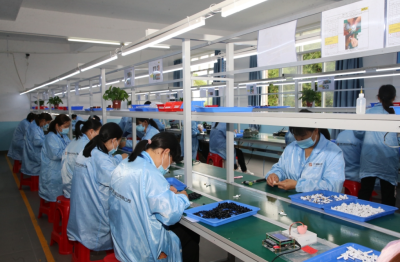In the fast-evolving world of industrial automation, electric mobility, and advanced manufacturing, precision isn’t just a buzzword—it’s the lifeblood of innovation. Whether you’re developing next-gen electric vehicles, optimizing industrial motors, or pushing the boundaries of aerospace engineering, the tools you rely on must deliver unmatched accuracy, durability, and adaptability. Enter the world of **hysteresis brakes**, **hysteresis dynamometers**, **hysteresis clutches**, and **motor test systems**—technologies that quietly power progress behind the scenes.
---
### 🔧 What Makes Hysteresis Technology Special?


Magtrol dynamometer recalibration are the unsung heroes of motion control and testing. Unlike traditional mechanical systems, hysteresis-based solutions operate without physical contact, reducing wear and tear while ensuring smooth, vibration-free performance. The secret lies in their use of magnetic fields to generate torque or resistance, creating a frictionless interaction that’s both efficient and maintenance-friendly.
**Hysteresis Brakes**: Imagine a braking system that doesn’t rely on pads, discs, or hydraulics. Hysteresis brakes use electromagnetic principles to provide precise torque control, making them ideal for applications like cable tensioning, robotics, and medical equipment. Their non-contact design ensures longevity, even in high-cycle environments.
**Hysteresis Dynamometers**: For engineers testing motors, turbines, or powertrains, hysteresis dynamometers offer unmatched repeatability. They absorb and measure power without mechanical linkages, enabling accurate load simulation for everything from tiny drone motors to massive industrial generators.
**Hysteresis Clutches**: When seamless torque transmission is critical—think packaging machinery or precision printing—hysteresis clutches shine. Their slip-free engagement and infinite adjustability make them a favorite in industries where consistency is king.
---
### 🏭 Motor Test Systems: Where Innovation Meets Validation
Testing isn’t just about passing benchmarks—it’s about ensuring reliability, efficiency, and compliance in real-world conditions. Modern **motor test equipment** goes far beyond basic RPM checks. Here’s how advanced systems are reshaping industries:
1. **Dynamic Load Simulation**: Replicate real-world stresses on motors using programmable dynamometers. Test electric vehicle drivetrains under mountainous terrain conditions or simulate sudden load changes for HVAC systems.
2. **Energy Recovery**: Cutting-edge test systems can recycle up to 90% of absorbed energy, slashing power costs and aligning with sustainability goals.
3. **AI-Driven Analytics**: Integrate machine learning to predict motor lifespan, identify inefficiencies, and optimize performance thresholds.
A well-designed **motor test system** isn’t just a tool—it’s a gateway to innovation. For example, a leading EV manufacturer recently reduced its prototype testing cycle by 40% using a hysteresis-based dynamometer, accelerating time-to-market for a breakthrough battery-cooling motor.
---
### 🌍 Applications Across Industries
From the factory floor to outer space, hysteresis and motor testing solutions are driving progress:

**Automotive**:
- **EV Powertrain Testing**: Validate torque consistency in regenerative braking systems.
- **Battery Cooling Motors**: Ensure silent, vibration-free operation for passenger comfort.
**Aerospace**:
- **Actuator Testing**: Simulate extreme temperature and pressure conditions for flight control systems.
- **Satellite Mechanisms**: Verify precision in zero-friction environments.
**Renewable Energy**:
- **Wind Turbine Generators**: Test durability under variable load conditions.
- **Hydroelectric Systems**: Optimize efficiency curves for maximum energy harvest.
**Consumer Electronics**:
- **Drone Propulsion Motors**: Balance power and noise levels for urban air mobility.
- **Robotic Vacuum Motors**: Ensure 10,000+ hours of maintenance-free operation.
---
### 🛠️ Choosing the Right Partner: Key Considerations
Investing in hysteresis or motor testing equipment isn’t just about specs—it’s about finding a solution that grows with your needs. Here’s what to prioritize:
1. **Scalability**: Can the system handle future upgrades, like higher torque ranges or IoT integration?
2. **Software Compatibility**: Look for platforms supporting Python, LabVIEW, or custom API development.
3. **Service Support**: Opt for vendors offering global calibration services and remote diagnostics.
4. **Regulatory Compliance**: Ensure adherence to ISO, IEC, and industry-specific standards.
A mid-sized robotics company recently avoided a $2M recall by partnering with a provider offering real-time torque monitoring—a feature they hadn’t initially considered critical.
---
### 🌟 The Human Touch in a Digital World
While technology advances, the human element remains irreplaceable. Behind every hysteresis brake calibration or motor efficiency report, there’s a team of engineers refining algorithms, troubleshooting anomalies, or brainstorming unconventional testing scenarios. One memorable case involved a client needing to test submarine thrusters in saltwater conditions—a challenge solved by customizing a dynamometer’s cooling system with corrosion-resistant materials.
---
### 🔮 Looking Ahead: The Road to Industry 5.0
As smart factories and autonomous systems redefine manufacturing, hysteresis and testing technologies are evolving in tandem:
- **Digital Twins**: Pair physical motors with virtual models for predictive maintenance.
- **Edge Computing**: Process test data in real-time at the source, reducing cloud dependency.
- **Quantum Sensors**: Future dynamometers may leverage quantum phenomena for nano-level torque measurements.
---
### 🤝 Your Next Step Toward Excellence
Whether you’re upgrading legacy systems or pioneering cutting-edge applications, the right tools can transform challenges into opportunities. Explore hysteresis-based solutions and motor test systems that align with your vision—because in the race for precision, compromise isn’t an option.
Ready to revolutionize your testing capabilities? Let’s engineer tomorrow, today. 🚀
---
[End of Article]
